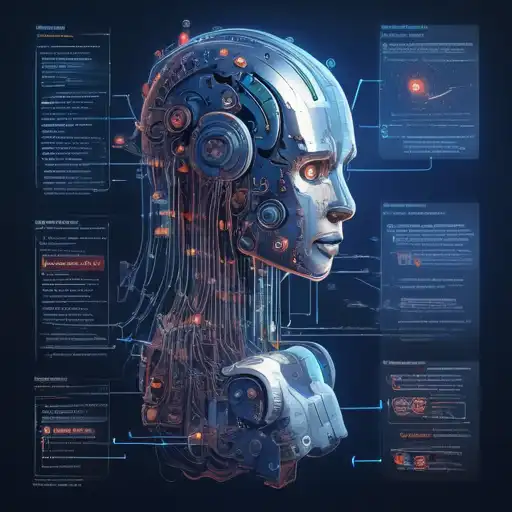Introduction to Machine Learning Algorithms
Machine learning algorithms are the backbone of artificial intelligence, enabling computers to learn from data and make decisions with minimal human intervention. This guide is designed to demystify these algorithms for beginners, providing a clear understanding of how they work and their applications in real-world scenarios.
What Are Machine Learning Algorithms?
At their core, machine learning algorithms are mathematical models that allow computers to learn patterns from data. These algorithms can be broadly classified into three categories: supervised learning, unsupervised learning, and reinforcement learning.
Supervised Learning Algorithms
Supervised learning algorithms are trained using labeled data. This means that the input data comes with the correct answers, allowing the algorithm to learn by comparing its predictions with the actual outcomes. Common examples include linear regression for predicting continuous values and logistic regression for classification tasks.
Unsupervised Learning Algorithms
Unsupervised learning algorithms, on the other hand, work with unlabeled data. These algorithms try to find hidden patterns or intrinsic structures in the input data. Clustering and association are two of the most common unsupervised learning tasks.
Reinforcement Learning Algorithms
Reinforcement learning algorithms learn by interacting with their environment, receiving rewards or penalties for actions, and aiming to maximize the total reward. This type of learning is widely used in robotics, gaming, and navigation.
Popular Machine Learning Algorithms Explained
Here’s a closer look at some of the most popular machine learning algorithms that beginners should know:
- Decision Trees: Used for both classification and regression tasks, decision trees model decisions and their possible consequences as a tree.
- Random Forest: An ensemble method that uses multiple decision trees to improve prediction accuracy and control over-fitting.
- Support Vector Machines (SVM): Effective in high-dimensional spaces, SVMs are used for classification and regression challenges.
- K-Nearest Neighbors (KNN): A simple, instance-based learning algorithm that classifies new cases based on a similarity measure.
Choosing the Right Algorithm
Selecting the appropriate machine learning algorithm depends on several factors, including the size and nature of your data, the computational resources available, and the specific problem you’re trying to solve. Beginners are encouraged to experiment with different algorithms to gain hands-on experience.
Applications of Machine Learning Algorithms
Machine learning algorithms have a wide range of applications, from email filtering and fraud detection to personalized recommendations and autonomous vehicles. Understanding these algorithms is the first step toward leveraging their potential in various industries.
Getting Started with Machine Learning
For those new to machine learning, starting with foundational algorithms like linear regression and decision trees is advisable. Numerous online resources and courses are available to help beginners build their knowledge and skills in this exciting field.
Machine learning is a rapidly evolving field, and staying updated with the latest algorithms and techniques is crucial for anyone looking to make a mark in data science and artificial intelligence.
